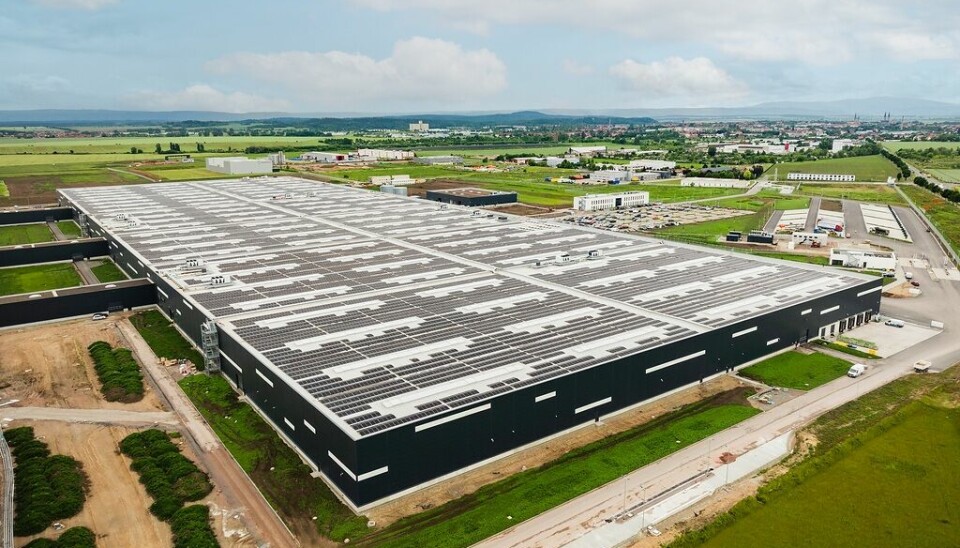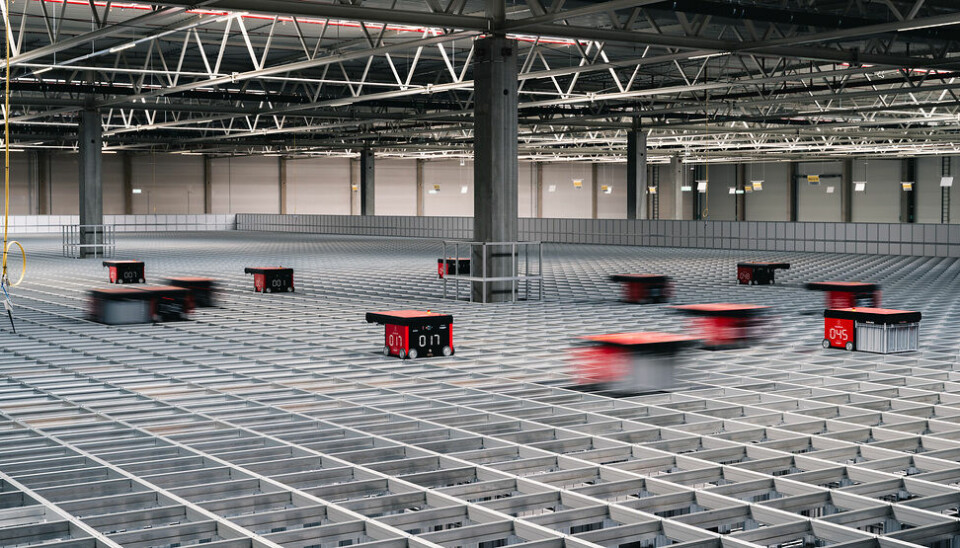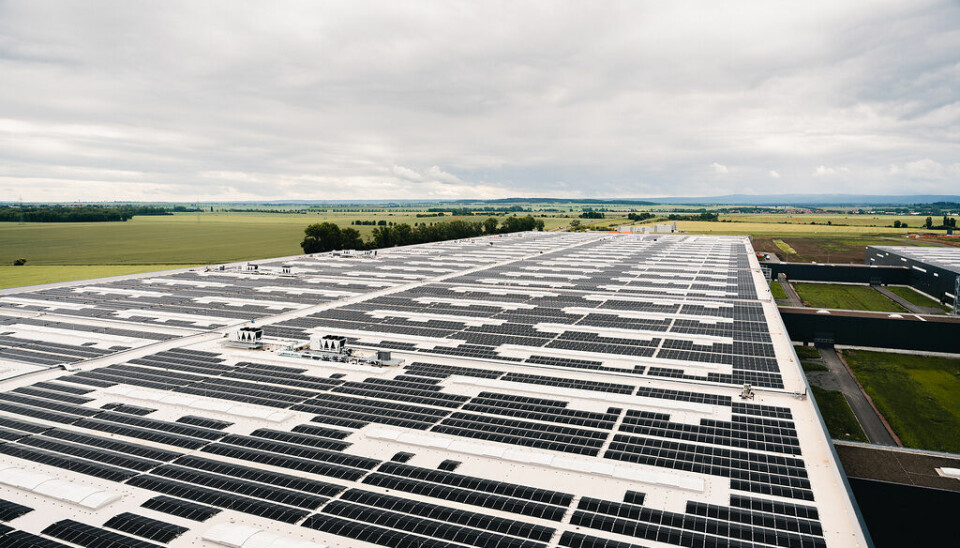Carbon-neutral automation
Daimler Truck opens Global Parts Center in Halberstadt

The carbon-neutral centre will handle 300,000 service parts for distribution to Mercedes-Benz Truck dealers around the world.
Daimler Truck has officially opened its €500m ($584m) global spare parts centre for the Mercedes-Benz Trucks division in Halberstadt, Germany – one of the biggest logistics projects in the company’s history.
In November this year, Daimler Truck will start to supply the first customers in Europe, followed a few weeks later by the rest of the world. Parts from Halberstadt will be sent daily by road, air, or sea freight. The company said it expects to send an average of 10,000 orders per day, with no customer order being the same.
The 260,000 sq.m Global Parts Center will receive 300,000 different line items from 2,600 suppliers and serve 20 regional logistics centres worldwide for onward delivery to almost 3,000 dealers in 170 countries. Day-to-day operations, including logistics for incoming and outgoing parts, as well as management of the parts warehouse, will be managed by DP World.
“What is being created here is unique and will generate around 650 jobs in the region, both in operational logistics and in administration,” said Dries Van Hoeymissen, executive vice-president for central Europe at DP World. “Our in-depth expertise from other projects in the region is now also helping us to get the Global Parts Center in Halberstadt off the ground."

Connected halls
The buildings for incoming goods and outgoing goods each have 12 halls each covering approximately 10,000 sq.m. The incoming and outgoing goods buildings are connected by three connection tunnels (or linkers). Construction firm Goldbeck has built the facility for Daimler Truck.
The centre is equipped with the latest warehousing and conveyor technology. In the pre-zone of the warehouse there are workstations and conveyor technology to store and retrieve containers. Daimler Truck said that all vehicle parts will be immediately available in an automated high-bay warehouse and an automated small parts warehouse. Goods are received and dispatched via two large, parallel halls, each around 200 metres wide and 600 metres long. Construction firm Goldbeck has built the facility for Daimler Truck.
Inbound to high-bay
The high-bay warehouse is a 40-metre-high steel structure in silo construction with a 10,000 sq. floor area and fully automated for daily operations, meaning no employee enters the facility. Test runs are currently being conducted at the facility.
Daimler Truck has already taken over about two-thirds of the GPC site and has been storing initial assortments in the GPC for weeks. The high-bay warehouse will be commissioned by the end of the year.
Inbound trucks come directly from the supplier for larger volumes or have been collected regionally beforehand by a local forwarding agency, which reduces traffic during delivery in Halberstadt. The truckmaker also receive sea freight containers from overseas suppliers.
“Since not all parts from our suppliers are directly storable, they are pre-packaged externally – for example, by one of our partners in Oschersleben, about 30km away,” said a spokesperson for Daimler Truck. “The goods end up in buffer areas from where they are transported to the different storage areas of the GPC.”
The truckmaker said fast and comprehensive parts supply enables vehicle fleets to maximise uptime.
“The Global Parts Center is impressive proof that we have made customer focus a core element of our Mercedes-Benz Trucks strategy,” said Achim Purchert, CEO of Mercedes-Benz Trucks. “The location will help us further increase the availability and delivery speed of our spare parts in the future."
Automated AutoStore Grid
The AutoStore at the Halberstadt centre, which handles the smaller parts, is also fully automated. Boxes are stacked on a grid, with about 160,000 stored in total.
“The innovative aspect of the AutoStore is that it continuously optimises itself,” said Daimler Truck’s spokesperson. Each of the 56 automated robots on the grid lifts boxes until it reaches the one it needs and then brings it to the station. Once the required number of parts has been taken from the box by an employee the robot returns the box to the grid.
“This way, the warehouse stacks itself according to demand,” said the spokesperson. “High-demand parts tend to be in the upper levels, while low-demand parts are more likely to be at the bottom. The system is extremely space-saving and fast, as multiple robots process orders in parallel.”
Disruption is avoided because if one robot fails, another steps in and replaces it. For a customer order, either complete boxes or pre-picked boxes are handed over to the conveyor which sends the shipment to the outgoing goods area.
The Global Parts Center also uses driverless transport systems. Thirty units bring the small parts from the conveyor to the respective packing stations in the outgoing goods area, where they are packaged and shipped. The transport drives over red guide lines on the floor covering 700 metres across the outgoing goods area.
Carbon-neutral operations
As previously reported, the Halberstadt facility will draw its energy from one of the largest rooftop photovoltaic systems in Europe, covering around 250,000 sq.m or 90% of all of the roof space at the site. Electric pumps will transfer heat into the building via underfloor heating systems. Daimler Truck said that high-energy efficiency will be achieved by low heating of water temperatures and the storage effect of the industrial floors.
An energy storage facility of approximately 2,000 kWh is planned in the first stage, which will be supplemented by a further storage facility at a later date. The aim is to keep the level of self-sufficiency as high as possible over the period of use.

The Global Parts Center will feature charging facilities for suppliers' trucks. Sixteen charging points with 200 kW charging capacity and four charging points with 400 kW charging capacity are available for e-truck charging. Daimler Truck will electrify its first route as early as August 2025 between Oschersleben, around 30km away. Additional e-truck routes will follow.
Daimler Truck is working to use electric trucks for inbound parts operations. That includes supplying eActros 300 and eActros 600 vehicles to its suppliers delivering parts to the Wörth assembly plant in Germany.
The Global Parts Center in Halberstadt will also contain 30 charging points for those employees using electric vehicles to get to work and that infrastructure will be expanded in the future.





